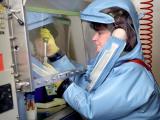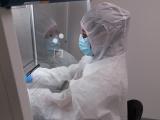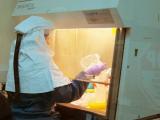Oct 7, 2003 (CIDRAP News) Brucellosis was detected in a Texas cattle herd recently, ending a 13-month stretch with no new Texas cases and postponing the day when the state can be declared free of the once widespread disease, according to the Texas Animal Health Commission (TAHC).
Texas and Missouri are the only states that still have cases of brucellosis, which can cause cows to abort, deliver weak calves, or produce less milk, the TAHC said in a news release last week.
Dr. Max Coats, deputy director of animal health programs at the TAHC, said officials had had hopes that the disease was eradicated before it was found in a herd in Henderson County. "With more than 153,000 cattle herds in Texas, finding the last infected herds is like looking for the proverbial needle in the haystack," Coats said. "We still may find a few more infected herds in Texas before we join the ranks of the other brucellosis-free states in this national disease eradication program."
The disease was detected through routine testing of breeding cattle being sold at livestock markets, Coats said. The TAHC is now testing neighboring herds and tracing cattle movements into and out of the infected herd to determine if the disease has spread.
Because cooked meat from infected cattle is safe, cows and bulls from the infected herd will be sent to slaughter, Coats explained. The owner will receive payment from the slaughter plant and an indemnity from the US Department of Agriculture to help offset the loss of the adult cattle and nursing calves. Weaned steers and spayed heifers may be kept, because they cannot spread brucellosis, which is transmitted mainly by infected cows during abortion or calving, officials said.
"Years ago, Texas had thousands of infected herds, which often were quarantined for up to a year or longer, while we periodically tested the cattle, to ensure all infected animals were removed or slaughtered," Coats said. Today the strategy is to depopulate infected herds as soon as possible, which is more effective and permits producers to get back in business with disease-free animals within weeks, he explained.
















